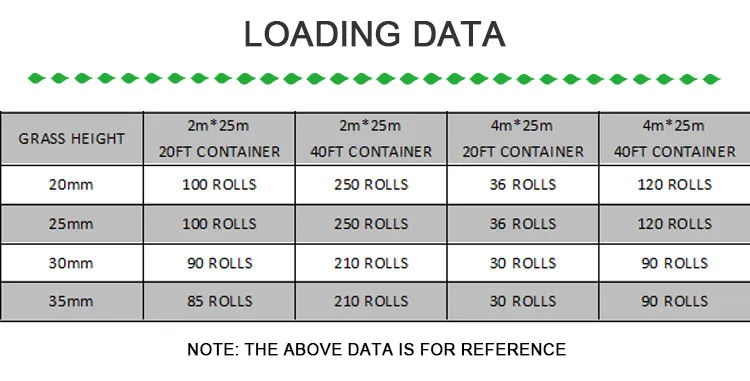
- Afrikaans
- Arabic
- Belarusian
- Bengali
- Czech
- Danish
- Dutch
- English
- Esperanto
- Estonian
- Finnish
- French
- German
- Greek
- Hindi
- Hungarian
- Icelandic
- Indonesian
- irish
- Italian
- Japanese
- kazakh
- Rwandese
- Korean
- Kyrgyz
- Lao
- Latin
- Latvian
- Malay
- Mongolian
- Myanmar
- Norwegian
- Persian
- Polish
- Portuguese
- Romanian
- Russian
- Serbian
- Spanish
- Swedish
- Tagalog
- Tajik
- Thai
- Turkish
- Turkmen
- Ukrainian
- Urdu
- Uighur
- Uzbek
- Vietnamese
average cost of installing artificial grass
Dec . 15, 2024 22:03 Back to list
The Average Cost of Installing Artificial Grass
The installation of artificial grass has become increasingly popular among homeowners and commercial property managers alike. As an alternative to natural grass, synthetic turf offers numerous advantages, such as reduced maintenance costs, water conservation, and a consistently green appearance. However, one of the most common concerns for those considering this upgrade is the average cost of installing artificial grass. This article aims to break down the factors influencing these costs and provide an overview of what potential buyers can expect.
The Cost Breakdown
Basic installation costs for artificial grass typically range from $5 to $20 per square foot. This figure can vary based on several factors, including the quality of the turf, the complexity of the installation, and regional pricing differences. On average, homeowners might spend anywhere from $2,000 to $6,000 for a standard-sized residential lawn, although larger or more intricate projects can push total costs significantly higher.
Quality of Turf
When it comes to synthetic grass, you often get what you pay for. Lower-priced options may be tempting, but they might not provide the durability or aesthetics that higher-quality products offer. Premium artificial grass often features UV protection to prevent fading, realistic textures, and advanced drainage systems. Homeowners should consider investing in quality turf to ensure longevity and satisfaction, which can lead to higher upfront costs but lower replacement and maintenance costs over time.
Installation Complexity
average cost of installing artificial grass

The complexity of the installation also plays a crucial role in determining the final cost. Simple, straightforward layouts will typically incur lower labor costs compared to more intricate designs that may require additional preparation, such as grading, leveling, and edging. Additionally, if the installation involves the removal of existing grass, grading the soil, or laying a base layer, these factors will add to the overall expense.
Regional Pricing Variations
The cost of artificial grass installation can vary widely depending on geographical location. Urban areas with a higher cost of living may see costs at the higher end of the spectrum, while rural areas might offer more competitive pricing. Furthermore, local climate and demand for artificial turf can also influence costs. For example, regions prone to drought may see a higher demand for artificial grass, impacting prices.
Maintenance Savings
One of the significant advantages of artificial grass is its low maintenance requirements. While natural lawns require regular mowing, watering, and fertilizing, artificial grass needs minimal upkeep. This translates to ongoing savings in terms of time, labor, and resources. Homeowners may find that the reduced need for landscaping services and water usage makes the initial investment worthwhile in the long run.
Conclusion
While the average cost of installing artificial grass can seem daunting, it’s essential to view it as an investment in a more sustainable, low-maintenance landscape solution. Factors such as the quality of the turf, complexity of the installation, and regional pricing should all be carefully considered when budgeting for this project. Ultimately, for many homeowners, the benefits of green, lush turf that requires minimal upkeep and conserves water may outweigh the initial costs. By thoroughly researching and selecting a reputable installer, homeowners can ensure they receive the best value for their investment in artificial grass.
-
The Benefits of Artificial Turf for Indoors
NewsJul.15,2025
-
How Artificial Grass Suppliers Ensure Quality Products
NewsJul.15,2025
-
Artificial Grass and Pets: A Space for Relaxation
NewsJul.08,2025
-
Balcony & Outdoor Decoration with Artificial Grass
NewsJul.08,2025
-
Best Indoor Artificial Grass for Home
NewsJul.07,2025
-
Best Pet Turf for Dogs: Safe & Durable Artificial Grass Options
NewsJul.07,2025
Products categories









